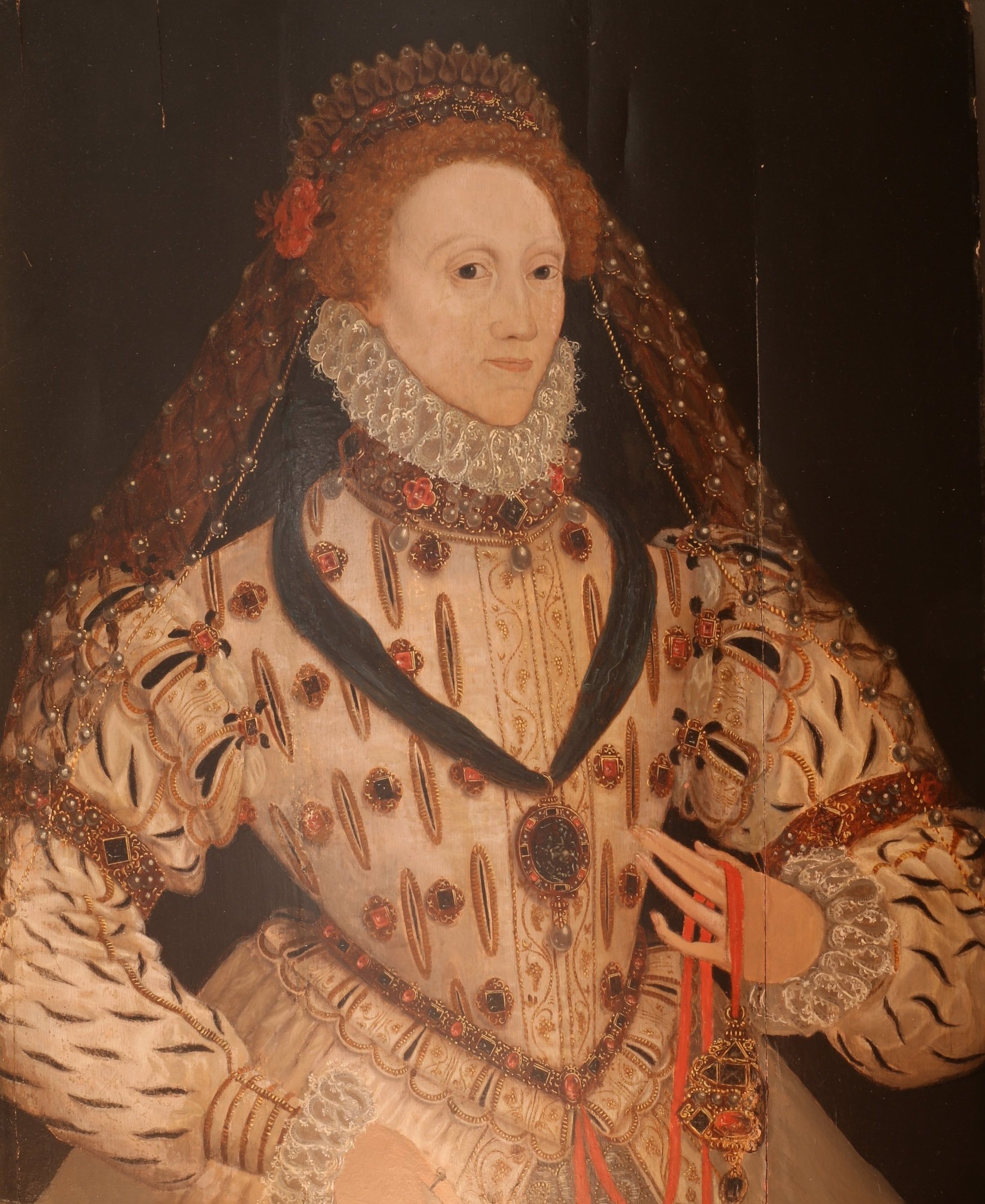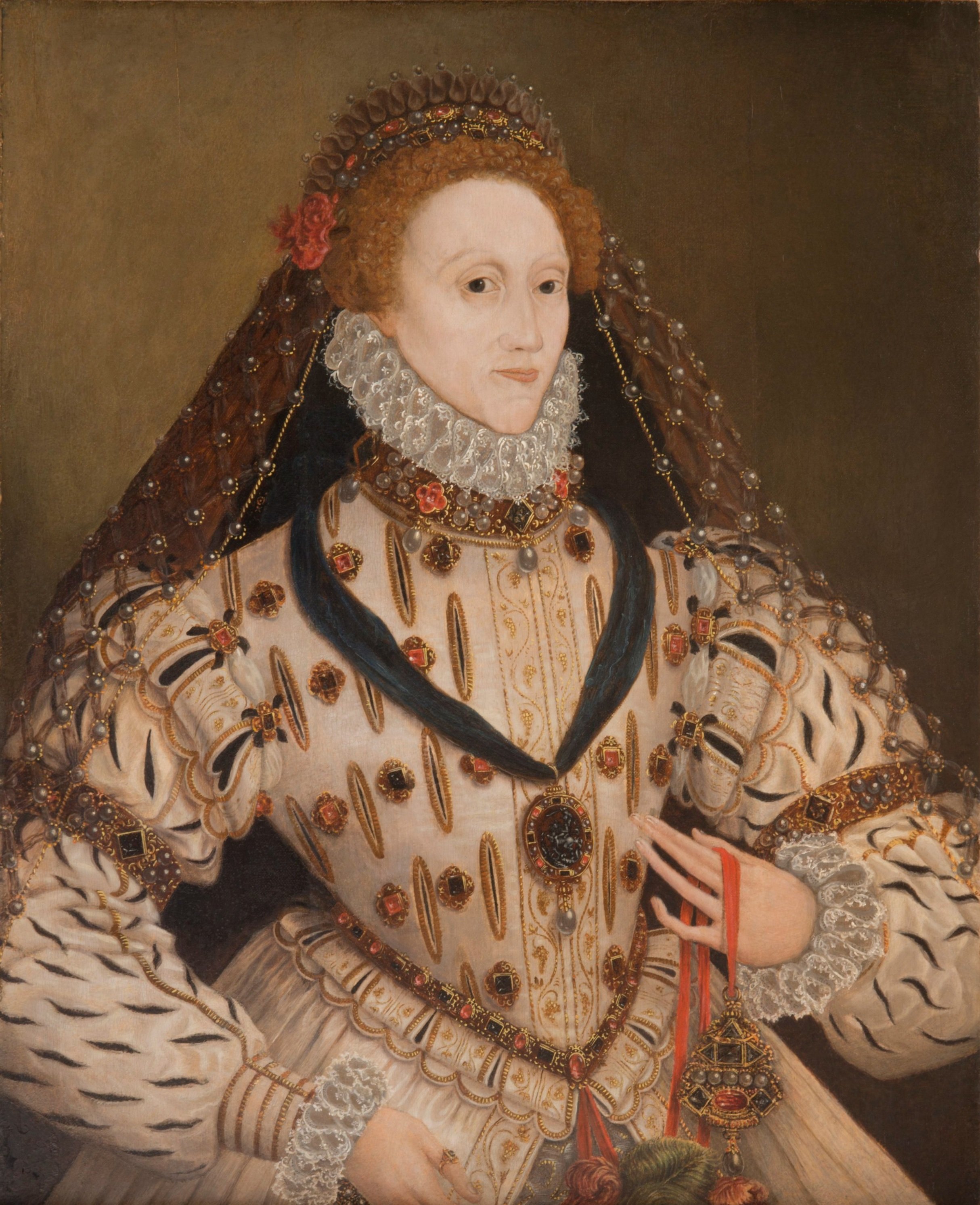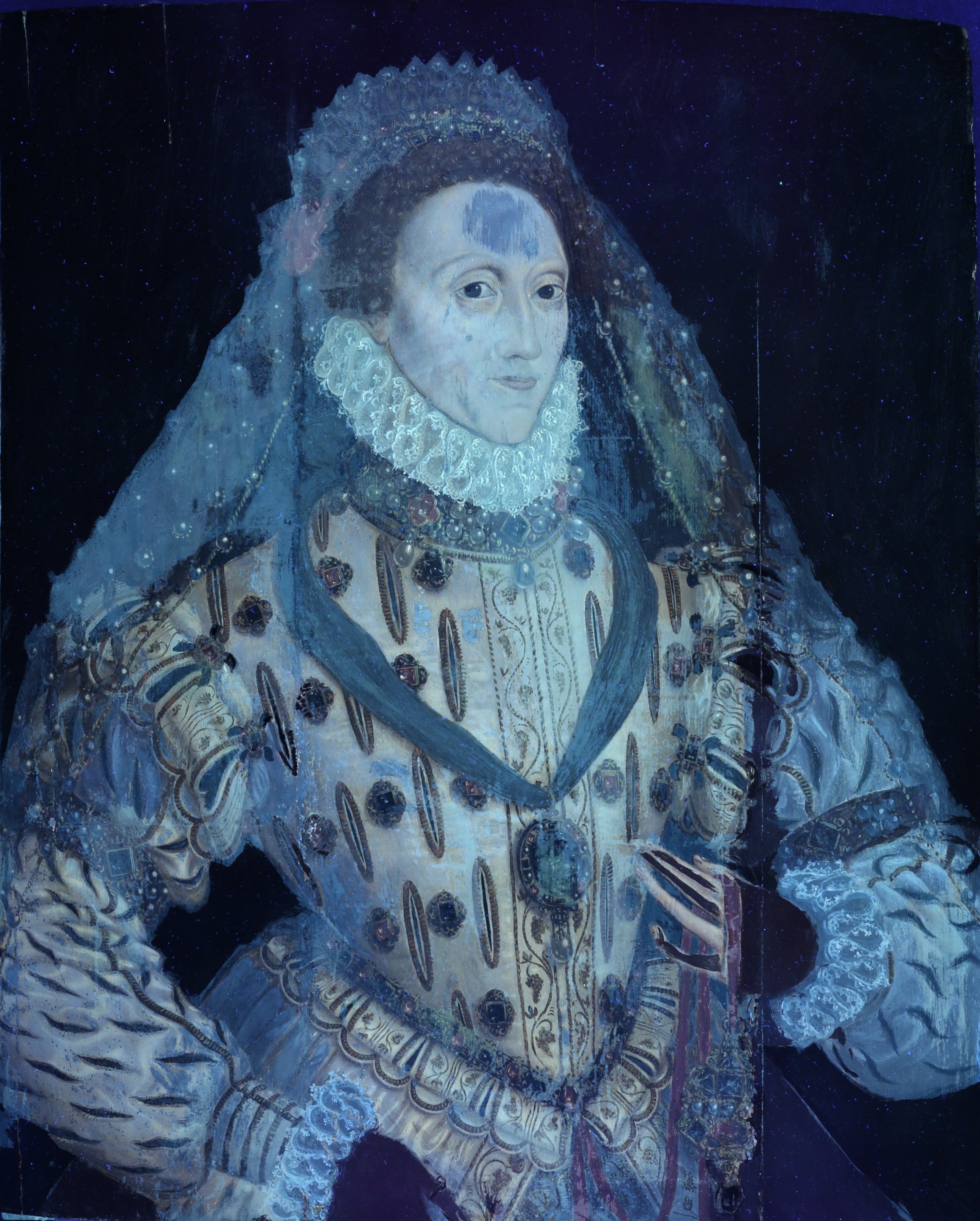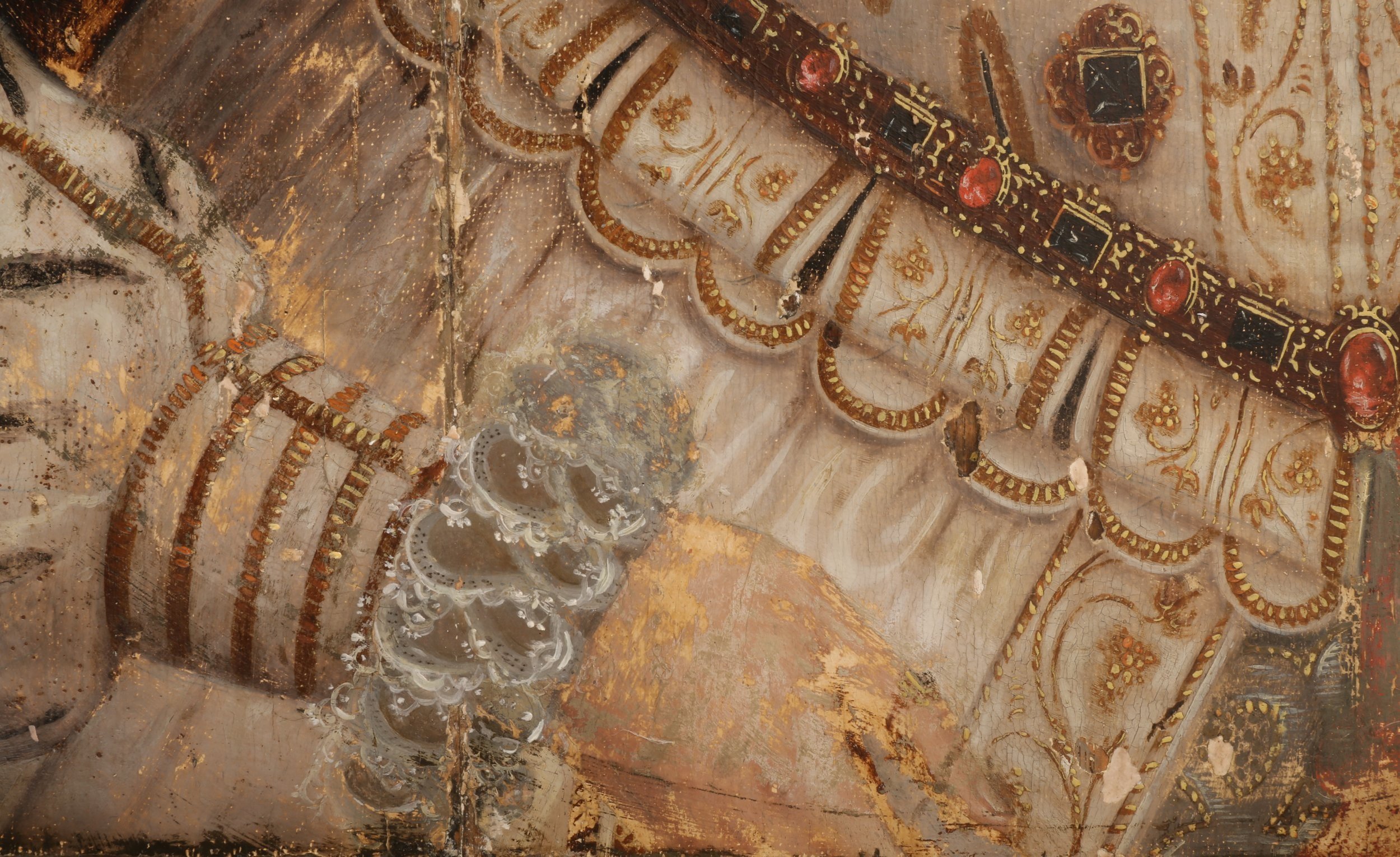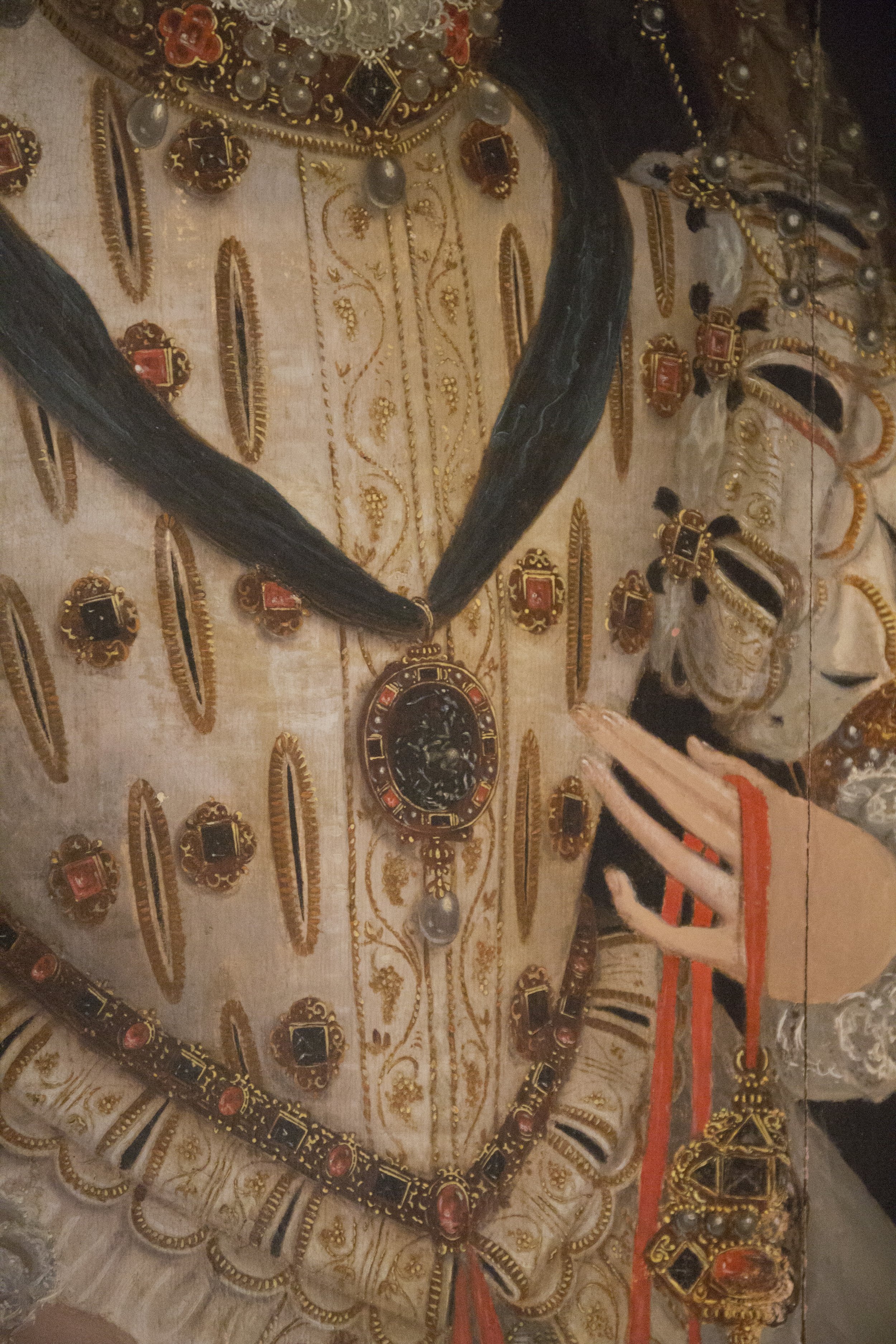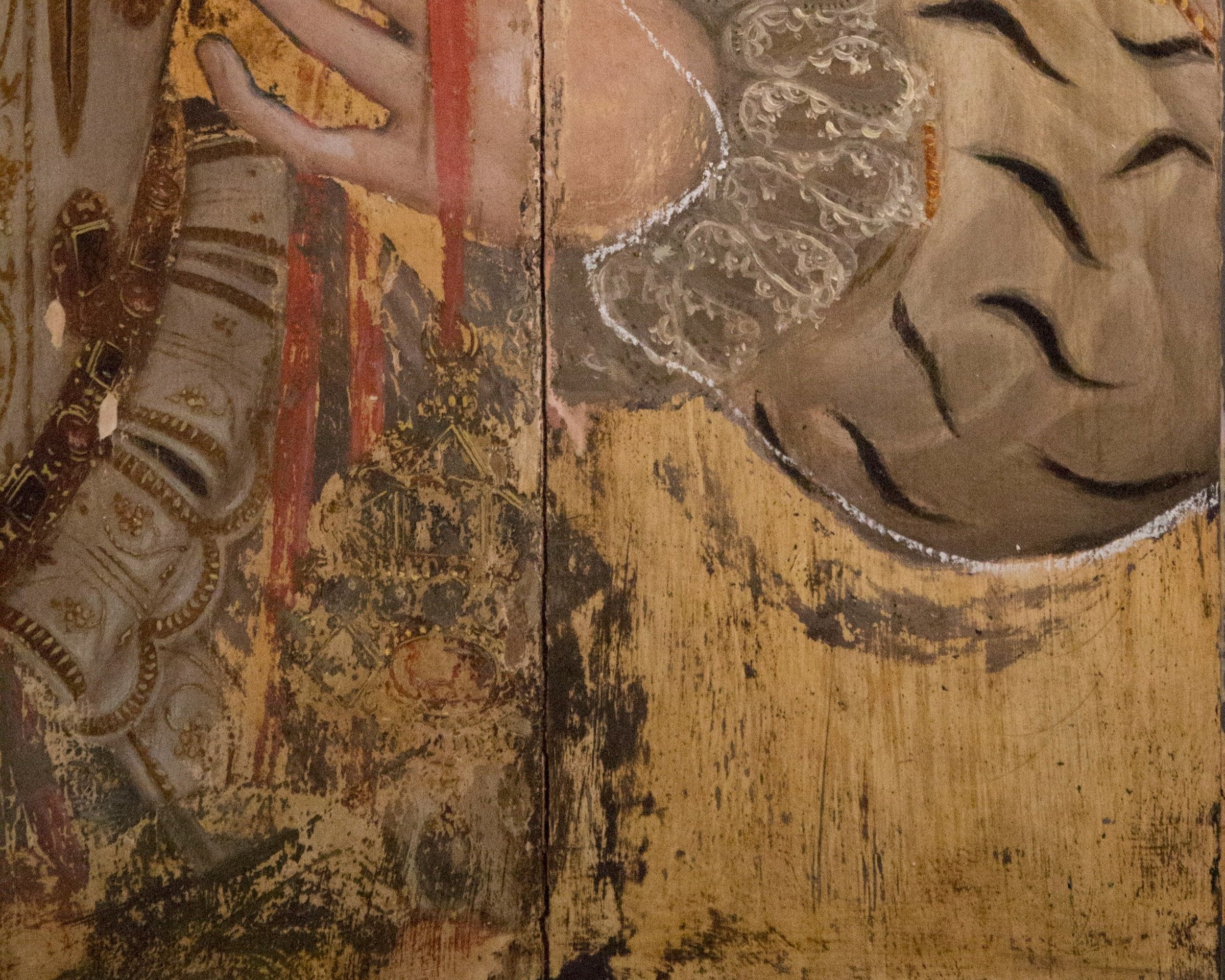Portrait of Queen Elizabeth I attributed to Nicholas Hilliard circa 1600
-
This privately owned panel painting of Queen Elizabeth I of England and Ireland “The Virgin Queen,” was most likely painted towards the end of her life in 1603. It has been attributed to Nicholas Hilliard, a Miniaturist, Goldsmith, and authorized court painter to the Queen. Hilliard painted two similar sized portraits of the queen in 1572 “The Phoenix Portrait,” and in 1576 “The Pelican Portrait.” If this painting was done by Nicholas Hilliard and/or is a painting of Queen Elizabeth I from life, it is a very significant piece of art, and one that needs to be properly conserved.
Queen Elizabeth I was the daughter of Henry VIII, King of England, and his second wife Anne Boleyn. Elizabeth ascended to the thrown of England and Ireland in 1558 after her sister, Mary I, died and reigned for 45 years until her death in 1603. She was never married, nor bore any children, and therefore was the last monarch of the Tudor dynasty.
-
The painting was executed in an oil medium on an oak panel which was comprised of three vertical planks with two glued joints. At some point in the mid 20th c. an attempt was made by an untrained restorer to clean and mount this painting onto a crudely built oak support panel. The attachment of the support panel was a total failure. As a result of this work, the original panel painting was further damaged. When we received this piece to work on, it had already partially separated from the added support panel. It had bowed severely, separated along the two original joints, formed partial cracks in individual planks, and opened up a full-length crack that had been previously repaired. Some sections of the original panel planks were now as thin as 1/8 to 1/16 inch. When we received this piece to treat, the detached panel painting with its cracks was sandwiched between the support panel and the frame, and was nailed through the painting directly into the frame, which exacerbated the situation causing more damage.
-
Under ultraviolet illumination the painting’s surface fluoresced the characteristic yellow/green of a natural resin varnish. The current coatings were very thick and had discolored significantly with age. The entire background of the painting, both hands, her proper right side of her dress, and a large 2” round area on her forehead has been completely overpainted. The majority of the inpainting on the Queen’s gown appears to be very old. Although the painting currently has a very matte and even surface coating, UV fluorescence showed that only her sleeves appeared to have been recently cleaned.
Detail of UV photo showing a heavily overpainted hand that you can see show up as a dark violet color.
Detail of overpaint on the forehead.
-
We carefully removed discolored varnish layers, embedded dirt, and overpaint, with the appropriate solvents. The lower more heavily degraded and tougher to remove layers of varnish and overpaint were removed with a stronger solvent. The viewer’s left two-thirds of the panel cleaned down to a very hard and structurally stable original paint layer. In some areas, such as on the queen’s right proper hand, and armpit, the paint was very abraded. The removal of several layers of overpaint and darkened varnish layers in the background revealed a heavily pitted surface from acidic damage from fly or insect droppings. It was our initial impression that this damage could only happen through many years of exposure, supporting the supposed age of the painting. The viewer’s right panel had several thick layers of overpaint in the background that seemed to dissolve differently and more easily than those on the rest of the painting cautioning us that this was a replacement panel.
Full cleaning
Protective tissue facing added during glue removal.
Removal of thick unknown adhesive from back of painting with scalpel.
Mounting panel onto Alumalite.
Protect Panel &
Re-Mount
-
We attached a temporary Japanese tissue paper facing on the front of the painting as our adhesive. We deemed this facing necessary in order to protect and secure the paint from further flaking during the removal of the secondary oak panel support from the back of the original panel sections.
About half of the original panel was detached from the support panel when we received it. Where it was still attached, we carefully separated it from the support panel.
-
A canvas sling was fashioned to support the curvature of the facedown panel sections allowing for the safe removal of residual thick, brittle, resinous-like wax adhesive on the panel painting’s back side. This adhesive layer, at some points as thick as a ¼”, was removed manually with a surgical scalpel until the clean wooden surface of the original oak panel was revealed.
-
Once the painting had been stabilized and the old adhesive removed, the temporary tissue facing was removed and an isolating varnish coating on the paintings surface was applied.
The painting was lined onto an interleaving piece of Belgium linen, and then attached to a thin, lightweight aluminum panel with a plastic core using a heat activated adhesive on the vacuum hot table. This system was used to minimize the future affect that fluctuations in temperature and relative humidity would have on the wood panel and paint layers while making it extremely light weight and strong.
Fills, Inpainting & Final Varnish
After fills and before inpainting.
-
Once the painting had gone through the above mounting process, it was left with an uneven surface due to losses, cracks, and exposed joints. These losses were then filled with gesso. After the gesso dried, a localized brush varnish coating was applied to seal all filled areas.
-
Using conservation grade paints, our staff conservators meticulously inpainted losses and reconstructed missing design elements or sections.
Reconstruction of missing or damaged elements was done in conjunction with review of other images of Queen Elizabeth I.
-
A final spray coat of synthetic varnish was applied to the painting to saturate the colors and bring it back to life.
Detail of Queen Elizabeth’s I head after inpainting.
Detail of hand after inpainting.
Before, Cleaned, and After inpainting of the Pommander.


